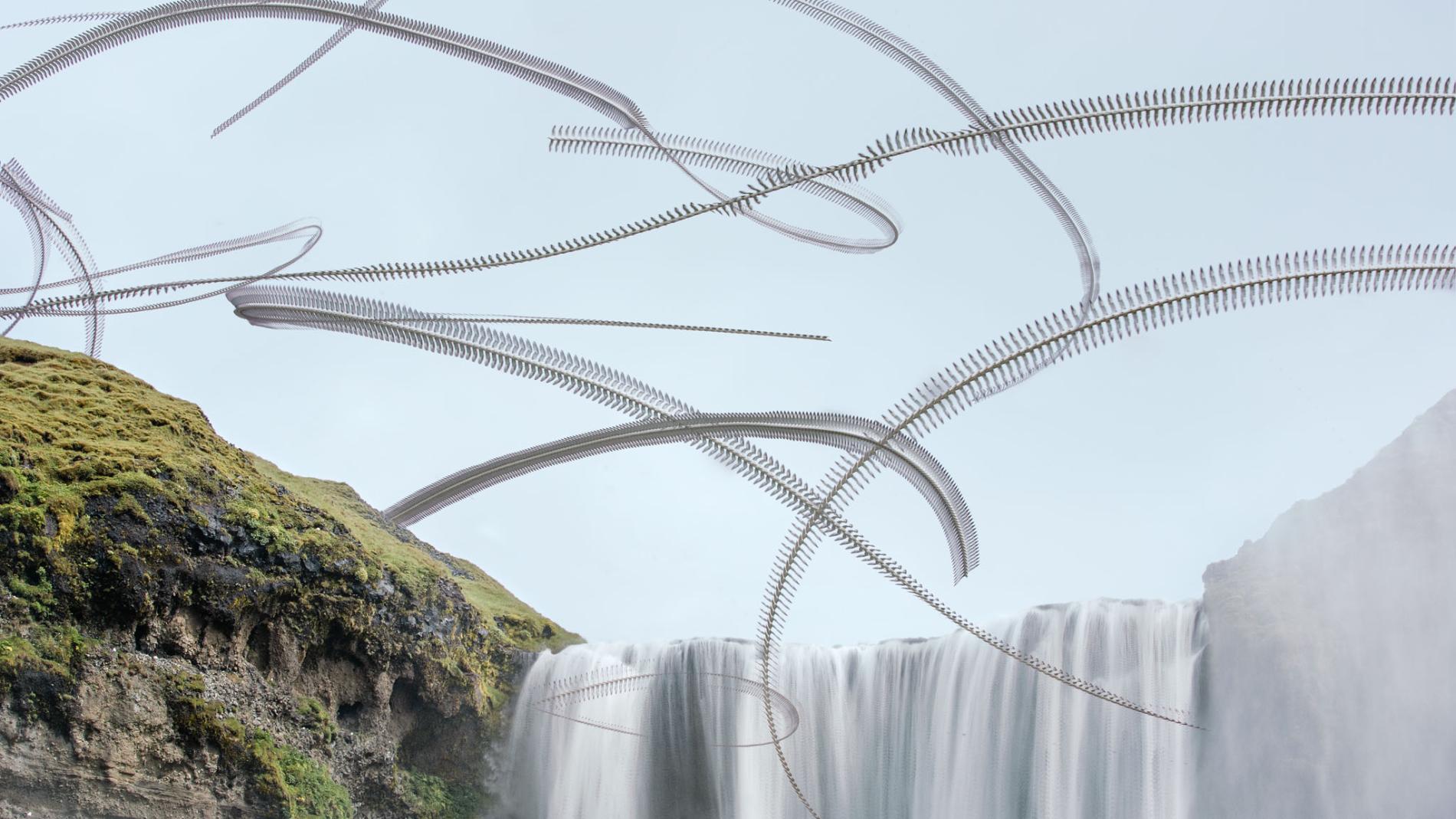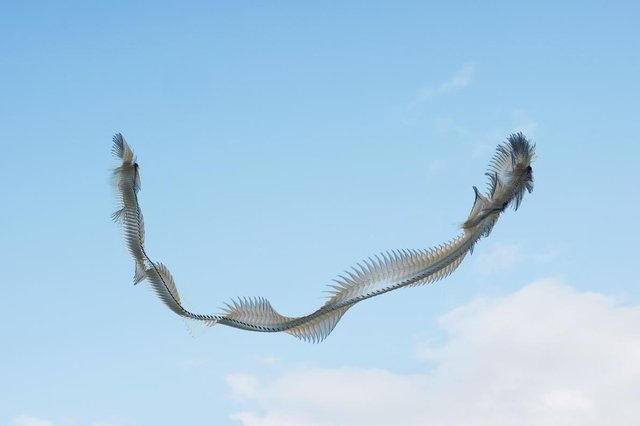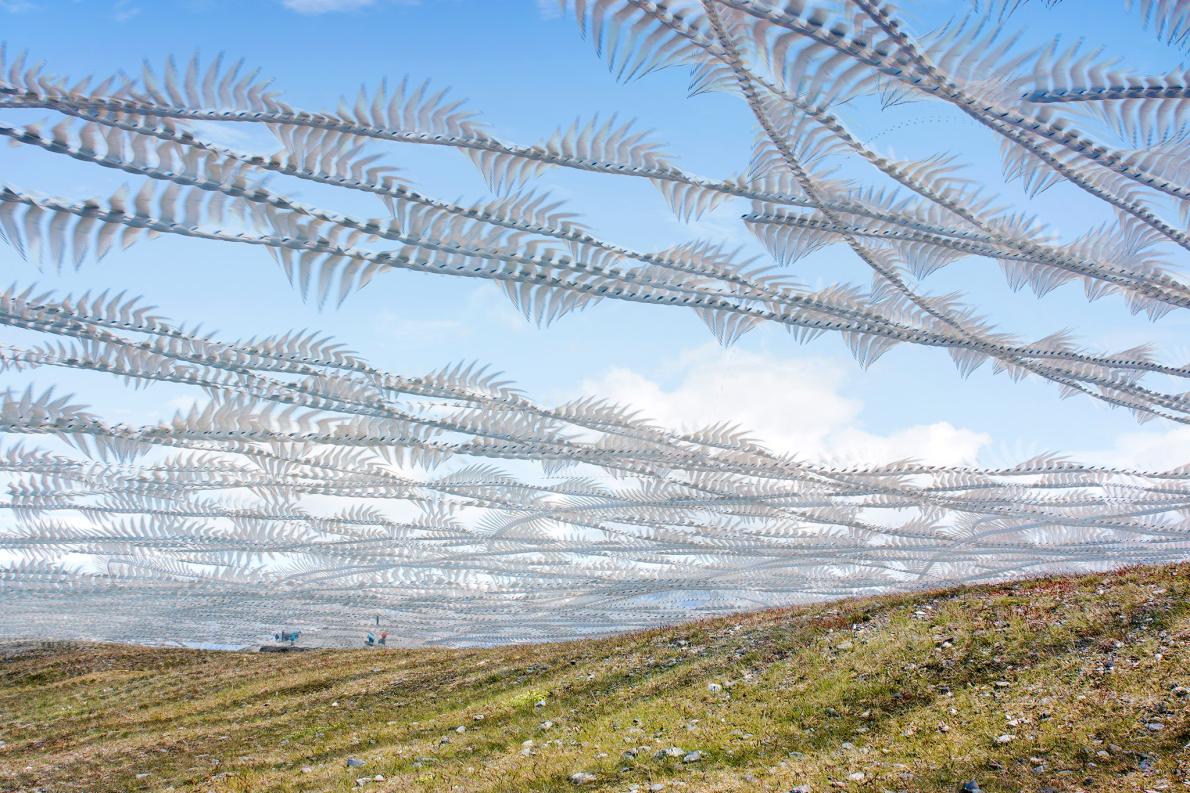If Birds Left Tracks in the Sky, They’d Look Like This
A post by Catherine Zuckerman, Photo Illustrations Xavi Bou found on Nat Geo web and thought to share with you all. I found it amazing creation by Catherine Zuckerman but if it happens practically, I think not only the air ways but the ground ways will also get disturb.
I am sure you all will also find it amazing and upvote.
A photographer captures the paths that birds make across the sky.
https://www.nationalgeographic.com/magazine/2018/01/photo-journal-birds-paths-migration-starling/?utm_source=NatGeocom&utm_medium=Email&utm_content=Look_Newsletter_20180109&utm_campaign=Look_Newsletter&utm_rd=966453812
By Catherine Zuckerman
Photo Illustrations Xavi Bou

If birds left tracks in the sky, what would they look like? For years Barcelona-based photographer Xavi Bou has been fascinated by this question. Just as a sinuous impression appears when a snake slides across sand, he imagined, so must a pattern form in the wake of a flying bird. But of course birds in flight leave no trace—at least none visible to the naked eye. Bou, now 38, spent the past five years trying to capture the elusive contours drawn by birds in motion, or, as he says, “to make visible the invisible.”
First he had to shed the role of mere observer. “Like a naturalist, I used to travel around the world looking at wildlife,” he says. He began exploring photographic techniques that would allow him to express his love of nature and show the beauty of birds in a way not seen before.

Ultimately he chose to work with a video camera, from which he extracts high-resolution photographs. After he films the birds in motion, Bou selects a section of the footage and layers the individual frames into one image. He finds the process similar to developing film: He can’t tell in advance what the final result will be. There’s one magical second, he says, when the image—chimerical and surreal—begins to emerge.
Before Bou began this project, which he calls “Ornitografías,” he earned degrees in geology and photography in Barcelona, then worked as a lighting technician in the fashion industry and also co-owned a postproduction studio. This current work, he says, combines his passion and his profession. “It’s technical, challenging, artistic, and natural. It’s the connection between photography and nature that I was looking for.”

A colony of arctic terns flees from its nesting ground in Iceland.
An arctic tern creates an unusual form as it flies against the wind at Jökulsárlón glacier lagoon in Iceland.In spring and summer thousands of fulmars and Atlantic puffins nest on Iceland’s rocky cliffs, including this basalt sea stack at Reynisdrangar.At the Utxesa reservoir in Spain, red-billed choughs reveal the flock’s circular flight patterns.A group of corn buntings flies away from a tree at Spain’s Laguna de Gallocanta salt marsh.Two fulmars fly parallel to the Icelandic coast on a typical foggy day.A flock of Eurasian jackdaws soars above Valderrobres, Spain.A herring gull flaps across a lagoon on the outskirts of Reykjavík, Iceland.Two black-winged stilt take off from a calm bay north of Spain’s Ebro River Delta.Greater flamingos take to the sky above Spain’s Ebro River Delta, an important breeding ground for the birds.Northern lapwings fly over fields in Catalonia, in Spain, where the birds visit every winter.Common starlings take flight from a power line by Spain’s Utxesa reservoir.At the International Barcelona pigeon race, pigeons swarm as they’re released from cages stacked inside large trucks.Common swifts fly over Barcelona on their annual migration between their winter home in Africa and summer breeding grounds in Europe.Yellow-legged gulls and white storks tend to share space in Mediterranean landfills, like this one near Castelló d’Empúries, Spain.A group of arctic terns dives for herring while two arctic jaegers (represented by the dark “7” at center and the dark horizontal form cut off at left) try to steal the fish away at Jökulsárlón, a large glacial lake in southeastern Iceland.
wow interesting maybe a slow camera can do that effect odveri ?
Absolutely right
Vote???
Thank you odveri !, did you like my last art post "indiffrence" what you think ? great to get your interpretion! : )
I will go through it but plz upvote my posts too
Wow..impressive...seems really hard to believe something like this could be achieved
Nothing is impossible if technology is available
Vote???